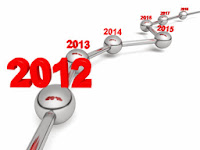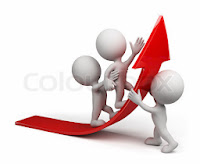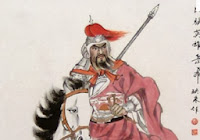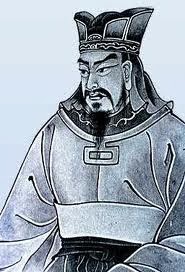If technical analysis works so well, why would more and more of the trading community shift their focus from technical analysis of the market to mental analysis of themselves, meaning their own individual
trading psychology? To answer this question, you probably don't have to do anything more than ask yourself why you bought this book. The most likely reason is that you're dissatisfied with the difference between what you perceive as the unlimited potential to make money and what you end up with on the bottom line.
That's the problem with technical analysis, if you want to call it a problem. Once you learn to identify patterns and read the market, you find there are limitless opportunities to make money. But, as I'm sure you already know, there can also be a huge gap between what you understand about the markets, and your ability to transform that knowledge into consistent profits or a steadily rising equity curve. Think about the number of times you've looked at a price chart and said to yourself, "Hmmm, it looks like the market is going up (or down, as the case may be)," and what you thought was going to happen actually happened. But you did nothing except watch the market move while you anguished over all the money you could have made.
There's a big difference between predicting that something will happen in the market (and thinking about all the money you could have made) and the reality of actually getting into and out of trades. I call this difference, and others like it, a "psychological gap" that can make trading one of the most difficult endeavors you could choose to undertake and certainly one of the most mysterious to master.
The big question is: Can trading be mastered? Is it possible to experience trading with the same ease and simplicity implied when you are only watching the market and thinking about success, as opposed to actually having to put on and take off trades? Not only is the answer an unequivocal "yes," but that's also exactly what this book is designed to give you—the insight and understanding you need about yourself and about the nature of trading.
So the result is that actually doing it becomes as easy, simple, and stress-free as when you are just watching the market and thinking about doing it. This may seem like a tall order, and to some of you it may even seem impossible. But it's not. There are people who have mastered the art of trading, who have closed the gap between the possibilities available and their bottom-line performance. But as you might
expect, these winners are relatively few in number compared with the number of traders who experience varying degrees of frustration, all the way to extreme exasperation, wondering why they can't create
the consistent success they so desperately desire. In fact, the differences between these two groups of traders (the consistent winners and everyone else) are analogous to the differences between the Earth and the moon. The Earth and moon are both celestial bodies that exist in the same solar system, so they do
have something in common. But they are as different in nature and characteristics as night and day. By the same token, anyone who puts on a trade can claim to be a trader, but when you compare the characteristics
of the handful of consistent winners with the characteristics of most other traders, you'll find they're also as different as nightand day.
If going to the moon represents consistent success as a trader, we can say that getting to the moon is possible. The journey is extremely difficult and only a handful of people have made it. From our perspective here on Earth, the moon is usually visible every night and it seems so close that we could just reach out and touch it. Trading successfully feels the same way. On any given day, week, or month, the markets make available vast amounts of money to anyone who has the capacity to put on a trade. Since the markets are in constant motion, this money is also constantly flowing, which makes the possibilities for success greatly magnified and seemingly within your grasp. I use the word "seemingly" to make an important distinction between the two groups of traders. For those who have learned how to be consistent, or have broken through what I call the "threshold of consistency," the money is not only within their grasp; they can virtually take it at will. I'm sure that some will find this statement shocking or
difficult to believe, but it is true. There are some limitations, but for the most part, money flows into the accounts of these traders with such ease and effortlessness that it literally boggles most people's minds.
However, for the traders who have not evolved into this select group, the word "seemingly" means exactly what it implies. It seems as if the consistency or ultimate success they desire is "at hand," or "within their grasp," just before it slips away or evaporates before their eyes, time and time again. The only thing about trading that is consistent with this group is emotional pain. Yes, they certainly have moments of elation, but it is not an exaggeration to say that most of the time they are in a state of fear, anger, frustration, anxiety, disappointment, betrayal, and regret.
So what separates these two groups of traders? Is it intelligence? Are the consistent winners just plain smarter than everyone else? Do they work harder? Are they better analysts, or do they have access to better trading systems? Do they possess inherent personality characteristics that make it easier for them to deal with the intense pressures of trading?
All of these possibilities sound quite plausible, except when you consider that most of the trading industry's failures are also some of society's brightest and most accomplished people. The largest group of consistent losers is composed primarily of doctors, lawyers, engineers, scientists, CEOs, wealthy retirees, and entrepreneurs. Furthermore, most of the industry's best market analysts are the worst traders imaginable. Intelligence and good market analysis can certainly contribute to success, but they are not the defining factors that separate the consistent winners from everyone else. Well, if it isn't intelligence or better analysis, then what could it be? Having worked with some of the best and some of the worst traders in the business, and having helped some of the worst become some of the best, I can state without a doubt that there are specific reasons why the best traders consistently out-perform everyone else. If I had to distill all of the reasons down to one, I would simply say that the best traders think differently from the rest.
I know that doesn't sound very profound, but it does have profound implications if you consider what it means to think differently. To one degree or another, all of us think differently from everyone else. We may not always be mindful of this fact; it seems natural to assume that other people share our perceptions and interpretations of events. In fact, this assumption continues to seem valid until we find ourselves in a basic, fundamental disagreement with someone about something we both experienced. Other than our physical features, the way we think is what makes us unique, probably even more unique than our physical features do. Let's get back to traders. What is different about die way the best traders think as opposed to how those who are still struggling think? While the markets can be described as an arena of endless
opportunities, they simultaneously confront the individual with some of the most sustained, adverse psychological conditions you can expose yourself to. At some point, everyone who trades learns something
about the markets that will indicate when opportunities exist. But learning how to identify an opportunity to buy or sell does not mean that you have learned to think like a trader.
The defining characteristic that separates the consistent winners from everyone else is this: The winners have attained a mind-set—a unique set of attitudes—that allows them to remain disciplined, focused, and, above all, confident in spite of the adverse conditions. As a result, they are no longer susceptible to the common fears and trading errors that plague everyone else. Everyone who trades ends up learning something about the markets; very few people who trade ever learn the attitudes that are absolutely essential to becoming a consistent winner. Just as people can learn to perfect the proper technique
for swinging a golf club or tennis racket, their consistency, or lack of it, will without a doubt come from their attitude Traders who make it beyond "the threshold of consistency" usually experience a great deal of pain (both emotional and financial) before they acquire the land of attitude that allows them to function effectively in the market environment.
The rare exceptions are usually those who were born into successful trading families or who started their trading careers under the guidance of someone who understood the true nature of trading, and, just as important, knew how to teach it. Why are emotional pain and financial disaster common among traders? The simple answer is that most of us weren't fortunate enough to start our trading careers with the proper guidance. However, the reasons go much deeper than this. I have spent the last seventeen years dissecting the psychological dynamics behind trading so that I could develop effective methods for teaching the principles of success. What I've discovered is that trading is chock full of paradoxes and contradictions in thinking that make it extremely difficult to learn how to be successful. In fact, if I had to choose one word that encapsulates the nature of trading, it would be "paradox." (According to the dictionary, a paradox is something that seems to have contradictory qualities or that is contrary to common belief or what generally makes sense to people.)
Financial and emotional disaster are common among traders because many of the perspectives, attitudes, and principles that would otherwise make perfect sense and work quite well in our daily lives have the opposite effect in the trading environment. They just don't work. Not knowing this, most traders start their careers with a fundamental lack of understanding of what it means to be a trader, the skills that are involved, and the depth to which those skills need to be developed.
Here is a prime example of what I am talking about: Trading is inherently risky. To my knowledge, no trade has a guaranteed outcome; therefore, the possibility of being wrong and losing money is always present. So when you put on a trade, can you consider yourself a risk-taker? Even though this may sound like a trick question, it is not.
The logical answer to the question is, unequivocally, yes. If I engage in an activity that is inherently risky, then I must be a risktaker. This is a perfectly reasonable assumption for any trader to make. In fact, not only do virtually all traders make this assumption, but most traders take pride in thinking of themselves as risk-takers.
The problem is that this assumption couldn't be further from the truth. Of course, any trader is taking a risk when you put on a trade, but that doesn't mean that you are correspondingly accepting that risk. In other words, all trades are risky because the outcomes are probable—not guaranteed. But do most traders really believe they are taking a risk when they put on a trade? Have they really accepted that the trade has a non-guaranteed, probable outcome? Furthermore, have they fully accepted the possible consequences?
The answer is, unequivocally, no! Most traders have absolutely no concept of what it means to be a risk-taker in the way a successful trader thinks about risk. The best traders not only take the risk, they have also learned to accept and embrace that risk. There is a huge psychological gap between assuming you are a risk-taker because you put on trades and fully accepting the risks inherent in each trade. When you fully accept the risks, it will have profound implications on your bottom-line performance. The best traders can put on a trade without the slightest bit of hesitation or conflict, and just as freely and without hesitation or conflict,
admit it isn't working.
They can get out of the trade—even with a loss—and doing so doesn't resonate the slightest bit of emotional discomfort. In other words, the risks inherent in trading do not cause the best traders to lose their discipline, focus, or sense of confidence. If you are unable to trade without the slightest bit of emotional dis- comfort (specifically, fear), then you have not learned how to accept the risks inherent in trading. This is a big problem, because to whatever degree you haven't accepted the risk, is the same degree to
which you will avoid the risk. Trying to avoid something that is unavoidable will have disastrous effects on your ability to trade successfully. Learning to truly accept the risks in any endeavor can be difficult,
but it is extremely difficult for traders, especially considering what's at stake. What are we generally most afraid of (besides dying or public speaking)? Certainly, losing money and being wrong both
rank close to the top of the list. Admitting we are wrong and losing money to boot can be extremely painful, and certainly something to avoid. Yet as traders, we are confronted with these two possibilities
virtually every moment we are in a trade.
Now, you might be saying to yourself, "Apart from the fact that it hurts so much, it's natural to not want to be wrong and lose something; therefore, it's appropriate for me to do whatever I can to avoid it." I agree with you. But it is also this natural tendency that makes trading (which looks like it should be easy) extremely
difficult. Trading presents us with a fundamental paradox: How do we remain disciplined, focused, and confident in the face of constant uncertainty? When you have learned how to "think" like a trader, that's exactly what you'll be able to do. Learning how to redefine your trading activities in a way that allows you to completely accept the risk is the key to thinking like a successful trader. Learning to accept the risk is a trading skill—the most important skill you can learn. Yet it's rare that developing traders focus any attention or expend any effort to learn it.
When you learn the trading skill of risk acceptance, the market will not be able to generate information that you define or interpret as painful. If the information the market generates doesn't have the potential to cause you emotional pain, there's nothing to avoid. It is just information, telling you what the possibilities are. This is called an objective perspective—one that is not skewed or distorted by what
you are afraid is going to happen or not happen. I'm sure there isn't one trader reading this book who hasn't
gotten into trades too soon—before the market has actually generated a signal, or too late—long after the market has generated a signal.
What trader hasn't convinced himself not to take a loss and, as a result, had it turn into a bigger one; or got out of winning trades too soon; or found himself in winning trades but didn't take any profits at all, and then let the trades turn into losers; or moved stoplosses closer to his entry point, only to get stopped out and have the market go back in his direction? These are but a few of the many errors traders perpetuate upon themselves time and time again.
These are not market-generated errors. That is, these errors do not come from the market. The market is neutral, in the sense that it moves and generates information about itself. Movement and information
provide each of us with the opportunity to do something, but that's all! The markets don't have any power over the unique way in which each of us perceives and interprets this information, or control of the decisions and actions we take as a result. The errors I already mentioned and many more are strictly the result of what I call "faulty trading attitudes and perspectives." Faulty attitudes that foster fear instead of trust and confidence.
I don't think I could put the difference between the consistent winners and everyone else more simply than this: The best traders aren't afraid. They aren't afraid because they have developed attitudes that give them the greatest degree of mental flexibility to flow in and out of trades based on what the market is telling them about the possibilities from its perspective. At the same time, the best traders have developed attitudes that prevent them from getting reckless. Everyone else is afraid, to some degree or another. When they're not afraid, they have the tendency to become reckless and to create the kind of experience for themselves that will cause them to be afraid from that point on.
Ninety-five percent of the trading errors you are likely to make—causing the money to just evaporate before your eyes—will stem from your attitudes about being wrong, losing money, missing out, and leaving money on the table. What I call the four primary trading fears. Now, you may be saying to yourself, "I don't know about this: I've always thought traders should have a healthy fear of the markets." Again, this is a perfectly logical and reasonable assumption. But when it comes to trading, your fears will act against you in such a way that you will cause the very thing you are afraid of to actually happen. If you're afraid of being wrong, your fear will act upon your perception of market information in a way that will cause you to do something that ends up making you wrong. When you are fearful, no other possibilities exist. You can't
perceive other possibilities or act on them properly, even if you did manage to perceive them, because fear is immobilizing. Physically, it causes us to freeze or run. Mentally, it causes us to narrow our focus of attention to the object of our fear. This means that thoughts about other possibilities, as well as other available information from the market, get blocked. You won't think about all the rational things you've learned about the market until you are no longer afraid and the event is over. Then you will think to yourself, "I knew that.
Why didn't I think of it then?" or, "Why couldn't I act on it then?" It's extremely difficult to perceive that the source of these problems is our own inappropriate attitudes. That's what makes fear so insidious. Many of the thinking patterns that adversely affect our trading are a function of the natural ways in which we were brought up to think and see the world. These thinking patterns are so deeply ingrained that it rarely occurs to us that the source of our trading difficulties is internal, derived from our state of mind. Indeed, it seems
much more natural to see the source of a problem as external, in the market, because it feels like the market is causing our pain, frustration, and dissatisfaction. Obviously these are abstract concepts and certainly not something most traders are going to concern themselves with. Yet understanding the relationship between beliefs, attitudes, and perception is as fundamental to trading as learning how to serve is to tennis, or
as learning how to swing a club is to golf. Put another way, understanding and controlling your perception of market information is important only to the extent that you want to achieve consistent results.
I say this because there is something else about trading that is as true as the statement I just made: You don't have to know anything about yourself or the markets to put on a winning trade, just as you don't have to know the proper way to swing a tennis racket or golf club in order to hit a good shot from time to time. The first time I played golf, I hit several good shots throughout the game even though I hadn't learned any particular technique; but my score was still over 120 for 18 holes. Obviously, to improve my overall score, I
needed to learn technique. Of course, the same is true for trading. We need technique to achieve consistency. But what technique? This is truly one of the most perplexing aspects of learning how to trade effectively. If we aren't aware of, or don't understand, how our beliefs and attitudes affect our perception of market information, it will seem as if it is the market's behavior that is causing the lack of consistency. As a result, it would stand to reason that the best way to avoid losses and become consistent would be to learn more about the markets.
This bit of logic is a trap that almost all traders fall into at some point, and it seems to make perfect sense. But this approach doesn't work. The market simply offers too many—often conflicting—variables to consider. Furthermore, there are no limits to the market's behavior. It can do anything at any moment. As a matter of fact, because every person who trades is a market variable, it can be said that any single trader can cause virtually anything to happen.
This means that no matter how much you learn about the market's behavior, no matter how brilliant an analyst you become, you will never learn enough to anticipate every possible way that the market can make you wrong or cause you to lose money. So if you are afraid of being wrong or losing money, it means you will never learn enough to compensate for the negative effects these fears will have on your ability to be objective and your ability to act without hesitation. In other words, you won't be confident in the face of constant uncertainty. The hard, cold reality of trading is that every trade has an uncertain outcome. Unless you learn to completely accept the possibility of an uncertain outcome, you will try either consciously or unconsciously to avoid any possibility you define as painful. In the process, you will subject yourself to any number of self-generated, costly errors. Now, I am not suggesting that we don't need some form of market analysis or methodology to define opportunities and allow us to recognize them; we certainly do.
However, market analysis is not the path to consistent results. It will not solve the trading problems created
by lack of confidence, lack of discipline, or improper focus. When you operate from the assumption that more or better analysis will create consistency, you will be driven to gather as many market variables as possible into your arsenal of trading tools. But what happens then? You are still disappointed and betrayed by the markets, time and again, because of something you didn't see or give enough consideration to. It will feel like you can't trust the markets; but the reality is, you can't trust yourself. Confidence and fear are contradictory states of mind that both stem from our beliefs and attitudes. To be confident, functioning in
an environment where you can easily lose more than you intend to risk, requires absolute trust in yourself.
However, you won't be able to achieve that trust until you have trained your mind to override your natural inclination to think in ways that are counterproductive to being a consistently successful trader. Learning how to analyze the market's behavior is simply not the appropriate training. You have two choices: You can try to eliminate risk by learning about as many market variables as possible. Or vou can learn how to redefine your trading activities in such a way that you truly accept the risk, and you're no longer afraid.
When you've achieved a state of mind where you truly accept the risk, you won't have the potential to define and interpret market information in painful ways. When you eliminate the potential to define market information in painful ways, you also eliminate the tendency to rationalize, hesitate, jump the gun, hope that the market will give you money, or hope that the market will save you from your inability to cut your losses.
As long as you are susceptible to the lands of errors that are the result of rationalizing, justifying, hesitating, hoping, and jumping the gun, you will not be able to trust yourself. If you can't trust yourself to be objective and to always act in your own best interests, achieving consistent results will be next to impossible. Trying to do something that looks so simple may well be the most exasperating thing you will ever attempt to do. The irony is that, when you have the appropriate attitude, when you have acquired a "trader s mind-set" and can remain confident in the face of constant uncertainty, trading will be as easy and simple as you probably thought it was when you first started out.
So, what is the solution? You will need to learn how to adjust your attitudes and beliefs about trading in such a way that you can trade without the slightest bit of fear, but at the same time keep a framework in place that does not allow you to become reckless. That's exactly what this book is designed to teach you.
As you move ahead, I would like you to keep something in mind. The successful trader that you want to become is a future projection of yourself that you have to grow into. Growth implies expansion,
learning, and creating a new way of expressing yourself. This is true even if you're already a successful trader and are reading this book to become more successful. Many of the new ways in which you will learn
to express yourself will be in direct conflict with ideas and beliefs you presently hold about the nature of trading. You may or may not already be aware of some of these beliefs. In any case, what you currently hold to be true about the nature of trading will argue to keep things just the way they are, in spite of your frustrations and unsatisfying results.
These internal arguments are natural. My challenge in this book is to help you resolve these arguments as efficiently as possible. Your willingness to consider that other possibilities exist—possibilities that you may not be aware of or may not have given enough consideration to—will obviously make the learning process faster and easier.
Source : trading in the zone by mark douglas













